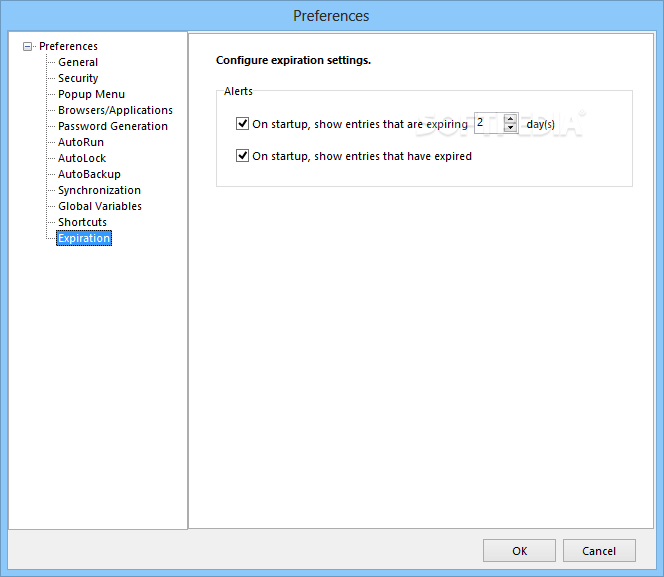
It should, however, never be stored in insecure locations such as Dropbox as the entire point is that only you have access to it! The key file can be stored in secure locations such as your home PC, phone, or encrypted USB stick.
#Kypass ios keyfile password
A password is still required but is useless without the key file. kbdx database and must be present in order to open the database. A key file is created when you create the. KeePass addresses this with optional out-of-the-box support for two-factor authentication (2FA) via key files. Passphrases are also often easier to remember than single passwords, which is good, because if you forget your master password then… oops.Įven the strongest password (or passphrase), though, is a point of weakness. Or even better, use a passphrase consisting of many words and spaces. Especially when it comes to passwords! With KeePass, you need only remember one master password ever again, but do please make sure it is a strong one! No matter how strong the encryption, however, the weak point is always human error. The NIST-averse can instead use optional plug-ins to encrypt their passwords with alternative ciphers such as Twofish or Serpent if they prefer. This is literally as strong as modern symmetric key encryption allows. kbdx files are secured using strong 256-bit AES encryption with an SHA-256 password hash function to authenticate the data. An adversary might able to access the encrypted .kbdx file, but good luck cracking AES-256 to open it!īy default, all. This ensures that no online adversary can ever access them, even in encrypted form.įor the super-paranoid out there this is great, but thanks to the strong encryption used for each .kddx file it is safe to store them in insecure online locations such as Dropbox. They need never leave your local storage, or you can manually sync them across your devices using USB cables, memory sticks, and suchlike. kbdx files are therefore fully end-to-end encrypted. Security can be farther improved by the use of a key file and/or some other form of multi-factor authentication. They are encrypted by you, and can only be decrypted by someone with your password. KeePass stores passwords client-side on your desktop in encrypted. KeePass 1.x differs quite considerably from KeePass 2.x, but these findings are nevertheless very encouraging.
#Kypass ios keyfile software
In 2016 the European Commission's EU Free and Open Source Software Auditing project ( EU-FOSSA) audited KeePass 1.31, concluding that “the code has a good level from a security point of view, with only a few findings, none of which were critical or high-risk in nature.” Nothing is guaranteed in this life, but because open source code can be examined by anyone qualified to do so, it provides the best guarantee we have that a program is doing what it is supposed to, and only what it is supposed to. Unlike commercial alternatives, KeePass uses 100 percent open-source code. To see how KeePass works in Android, check out our Keepass2Android review. This is admittedly a bit of a pain but blame Apple, not KeePass.

The only issue is that thanks to the locked-down nature of iOS apps, KeePass apps in iOS must import and export .kbdx files from the iOS Dropbox app rather than simply opening and saving the file in Dropbox directly. This allows for seamless e2ee syncing across devices and platforms. The ability to store .kbdx files safely in the cloud is very handy for syncing across devices, as KeePass-compatible apps on any platform can access and open the files with the correct password (and key file and/or other 2FA if used), modify them, and save the updated version to the cloud location. These .kbdx files can be securely stored anywhere, including insecure locations such as Dropbox and Google Drive. Passwords are stored inside encrypted KeePass containers, often referred to as .kbdx files after their file extension. There are no commercial versions of it.Īdditional features are available via a huge list of plugins and extensions, many of which cater to rather niche requirements. KeePass is a community-developed, free and open-source software (FOSS). Not quite as easy to use as some password managers.We can see no advantage whatsoever in using KeePass 1.x unless you need to work with legacy password files. KeePass 1.x is a fundamentally different program which remains maintained primarily for backward compatibility reasons. Please note that this article concerns KeePass 2.x. KeePass supports a selection of plugins that extend its functionality far beyond that of any other password manager. The main downside of this, of course, is that there is no safety net - no third party that can bail you out if you forget your master password! They are not stored on a centralized database that can be hacked (as commercial password manager ones often are), and only you hold the encryption keys to them.


 0 kommentar(er)
0 kommentar(er)
